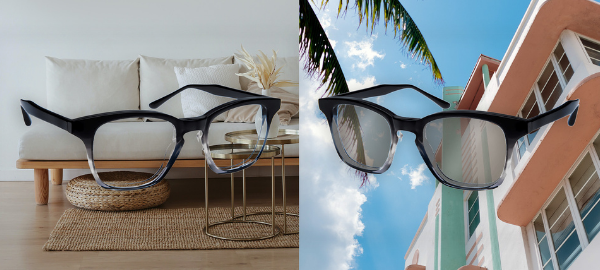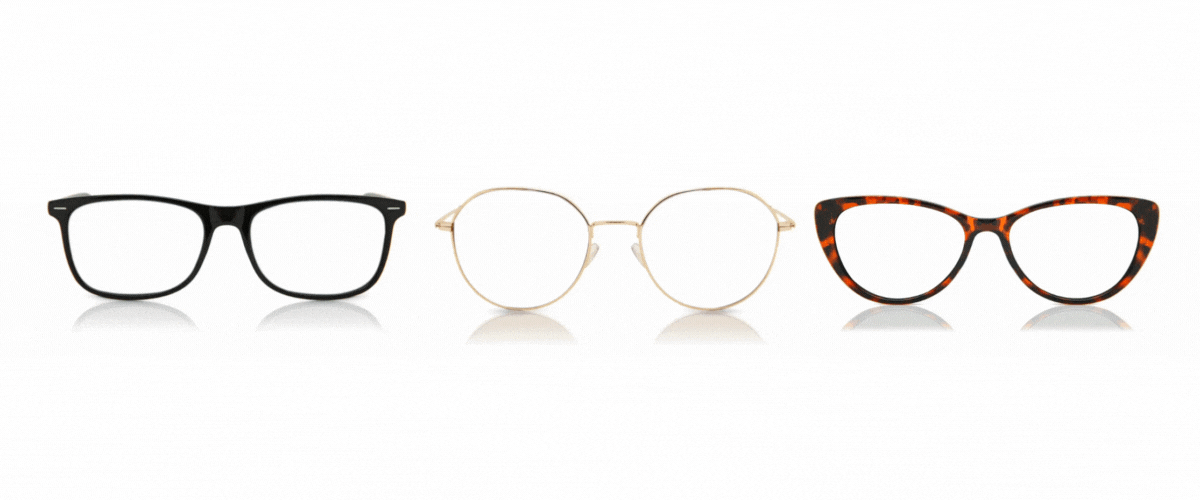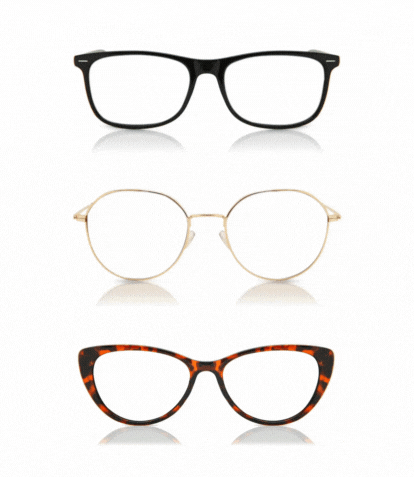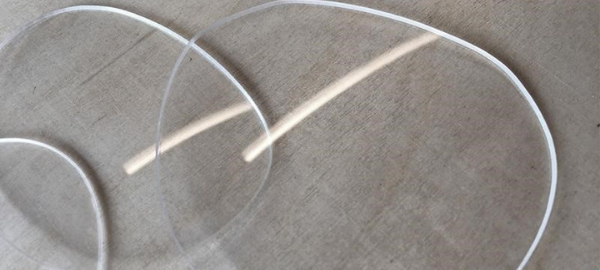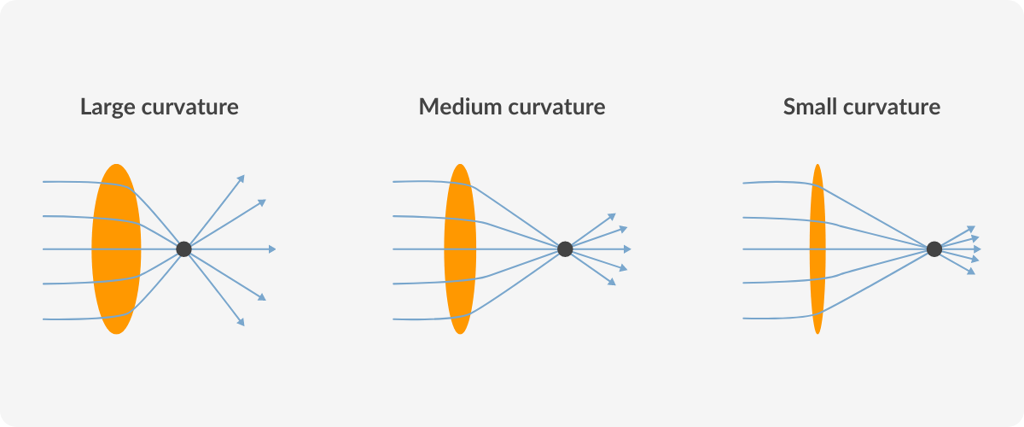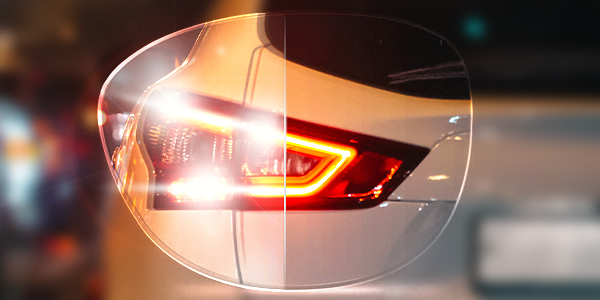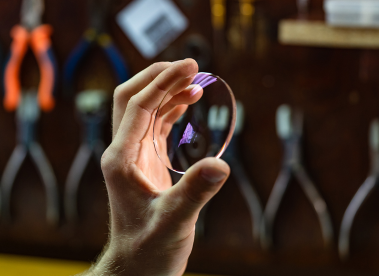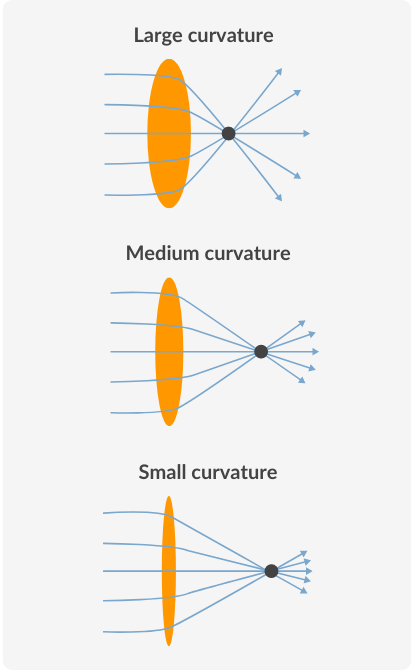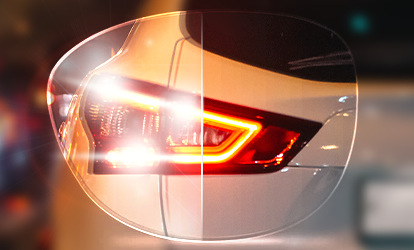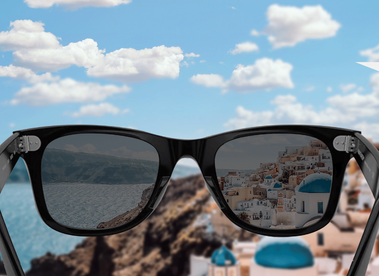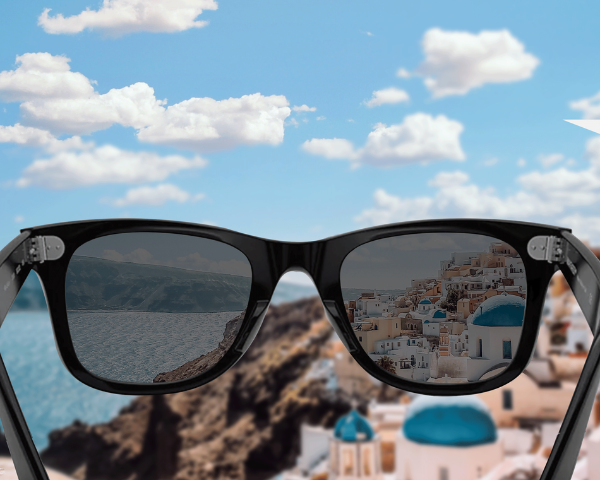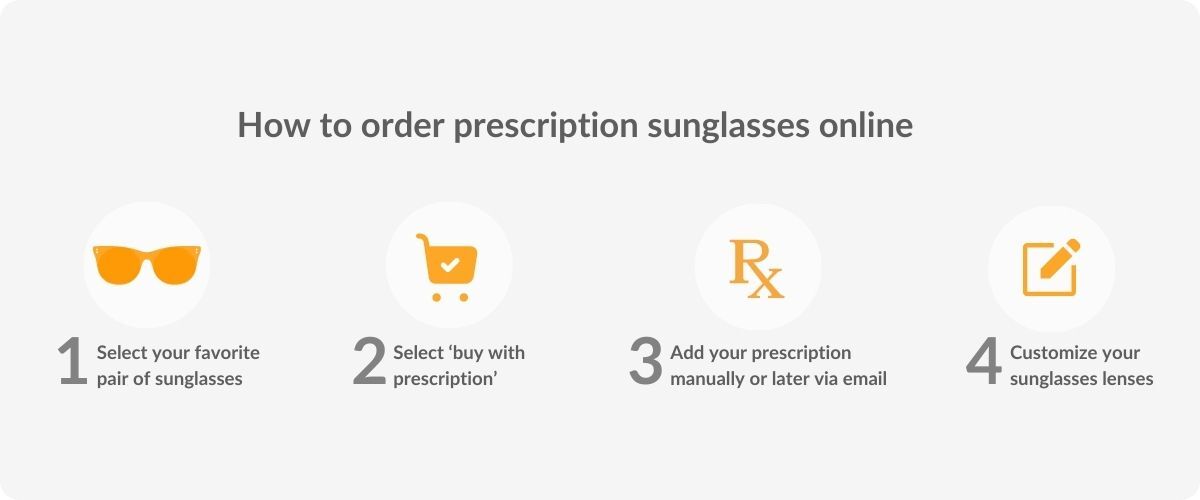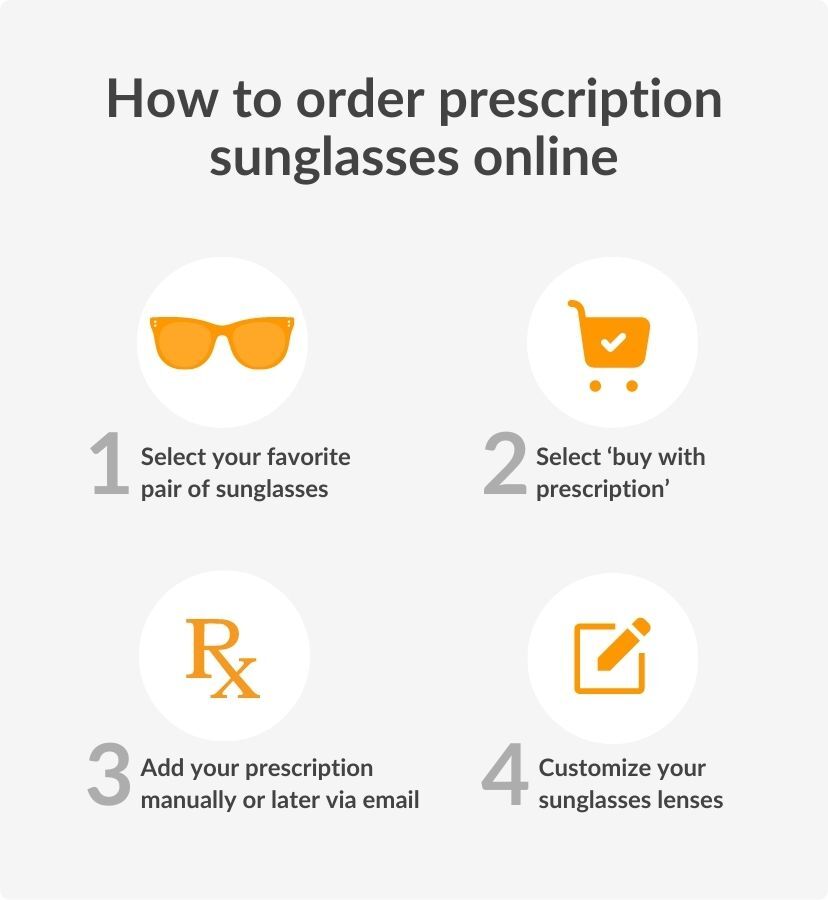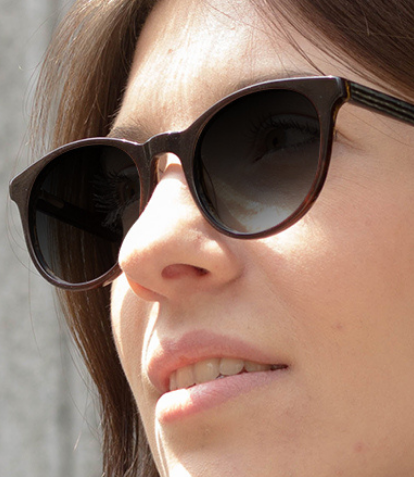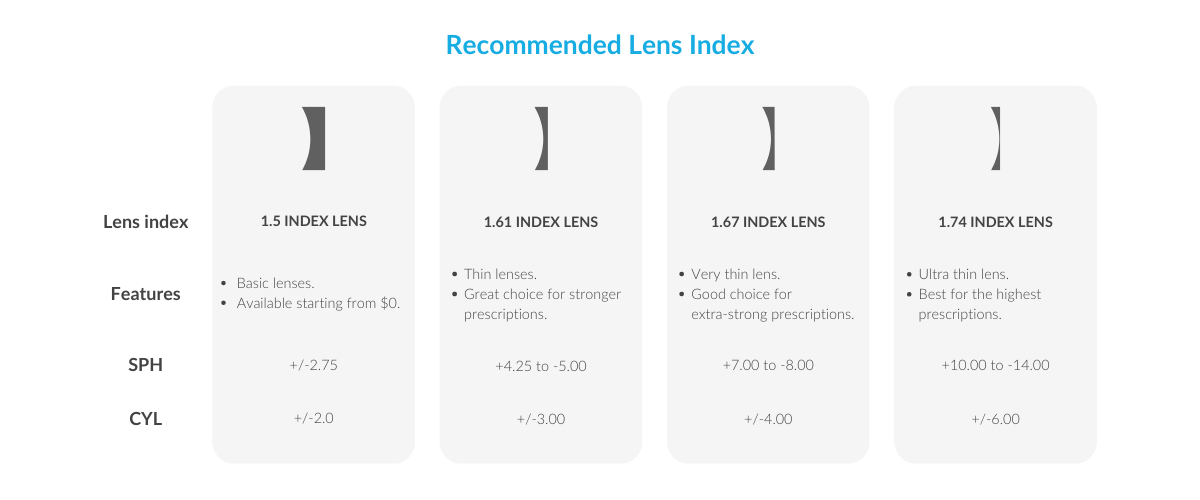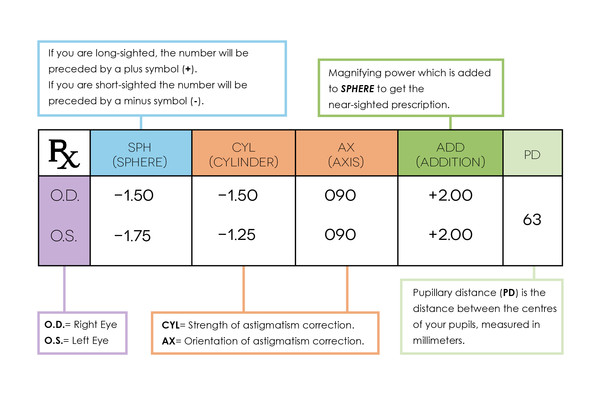

Prism Glasses
Prism glasses may effectively treat eye conditions such as double vision or other binocular vision difficulties. Our eye movements are controlled by six different muscles in each eye, and if one of these muscles is weak, it could cause eye strain, headaches, or even double vision.
What are prism lenses?
Prism lenses may be prescribed by eye doctors but do not correct any refractive errors like farsightedness or nearsightedness, as they do not contain any focusing power. Temporary prism lenses, called Fresnel prisms, are made of vinyl and are attached to your eyeglasses. This is an excellent option for those wanting to try prism lenses before getting permanent ones or if your double vision is temporary. More permanent prism lenses are usually made of plastic or glass, are wedge or triangle shaped and are infused into regular lens prescriptions.
How do prism glasses work?
In order to see clearly, light entering the eye must focus on the retina, the area at the back of the eye where light images are translated and sent to the brain. When your eyes are misaligned, they don’t move accurately together, and images are formed on different parts of the retinas, causing double vision.
Prism glasses compensate for this misalignment by bending and redirecting the light rays on the retina, aligning and producing a clear image. This bending of light improves eye alignment, helping you to see comfortably and prevent double vision.
Why do people see double?
Double vision, or diplopia, is a condition in which you see two of everything. Any misalignment of the eyes may cause you to see double, making it difficult to judge distances, read and perform everyday tasks. Double vision may signify a more severe problem, so you should speak with your eye doctor if you experience it.
Prism glasses for double vision
Double vision can sometimes be treated with eye exercises, or your doctor may give you a temporary prism to attach to your glasses. If the temporary prisms help your double vision, prisms may then be added to your prescription lenses. A prism bends the light before it travels through the eye and directs it to the right place on the retina, allowing the brain to fuse the two images together to produce one clear image.
What do prism glasses look like?
If using temporary prisms, these are typically more visible as they are attached to your glasses. If your eye doctor prescribes prism lenses for long-term use, these prisms will be fused into your regular lenses. They will look the same as before, but the glass on one side might be thicker. If this is a concern, consider a thicker frame to hide it.
What does a prescription for a prism look like?
Your glasses prescription will show you all of the details on the type of vision you have. Numbers indicate how strong lenses need to be and where they should be positioned within the frame. If there is a number in the ‘PRISM’ portion of your prescription, you have a weak eye muscle that needs correction. The ‘BASE’ section will explain how the prism should be aligned.
PRISM – diopters measure the amount of prism correction needed (from 0.5PD, 1.0PD, 1.5PD and so on) and indicate how misaligned your eyes are. If the power required is high, it can be split into two since alignment is a function of both eyes.
BASE– depending on your double vision, the prism is placed vertically or horizontally in one or both lenses. It may be on the outer edge of the lens (Base Out, BO), the inner edge (Base In, BI), or at the top (Base Up, BU) or bottom edge (Base Down, BD).
 In the above prescription, between the axis and ADD value, there are the prism specifications. There are two main factors to highlight when you read your prescription with prism lenses:
In the above prescription, between the axis and ADD value, there are the prism specifications. There are two main factors to highlight when you read your prescription with prism lenses:
- The first value will be indicated by a number between 0.5 and 5.0. This refers to the amount of prism correction needed. Some specialised labs can also produce prescriptions above 5.0.
- This number is then followed by B (base). The base is the part of the lens that will be thicker and indicate the direction of the prism. There is BO (base out), BI (base in), BD (base down) and BU (base up).

How to order prism glasses online
Ordering prism glasses at SmartBuyGlasses is easy. After choosing the pair that best suits you, select your lenses. First, decide the type (distance, progressive, reading, or non-prescription). You will then be prompted to either fill in your prescription manually, upload it, send it later, or choose from your account. Below are the details for entering manually.
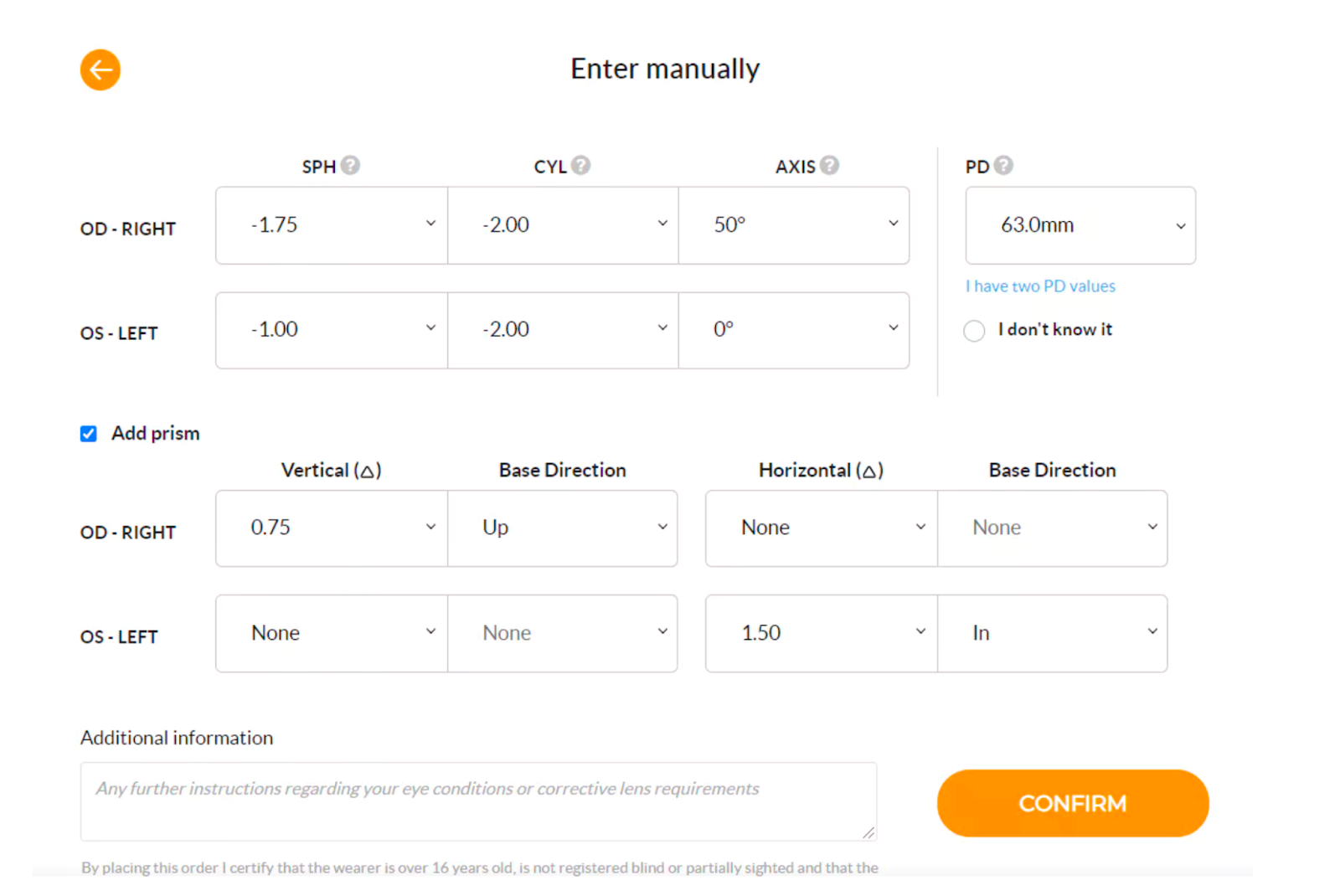
- Enter distance corrected under SPH for the left and right eye
- Astigmatism details go under CYL and AXIS
- PD* (pupillary distance)
- Select ‘add prism’ for a small fee and input the prism correction values
*PD is necessary to calculate correctly; an incorrect value can cause visual discomfort. You can get the correct measurement at your local optician or calculate it yourself with these easy steps in measuring your PD.
Ask our in-house opticians if you have any doubts about how to read and fill out your prescription online.
Prism lenses for daily life
Double vision can be uncomfortable and prevent you from doing everyday activities. Adding a prism to your lenses can restore your vision and improve your quality of life. With an endless possibility of frame choices and an easy way to enter your prescription online, there is no reason double vision should continue impacting your life.
Prism Glasses
Prism glasses may effectively treat eye conditions such as double vision or other binocular vision difficulties. Our eye movements are controlled by six different muscles in each eye, and if one of these muscles is weak, it could cause eye strain, headaches, or even double vision.
What are prism lenses?
Prism lenses may be prescribed by eye doctors but do not correct any refractive errors like farsightedness or nearsightedness, as they do not contain any focusing power. Temporary prism lenses, called Fresnel prisms, are made of vinyl and are attached to your eyeglasses. This is an excellent option for those wanting to try prism lenses before getting permanent ones or if your double vision is temporary. More permanent prism lenses are usually made of plastic or glass, are wedge or triangle shaped and are infused into regular lens prescriptions.
How do prism glasses work?
In order to see clearly, light entering the eye must focus on the retina, the area at the back of the eye where light images are translated and sent to the brain. When your eyes are misaligned, they don’t move accurately together, and images are formed on different parts of the retinas, causing double vision.
Prism glasses compensate for this misalignment by bending and redirecting the light rays on the retina, aligning and producing a clear image. This bending of light improves eye alignment, helping you to see comfortably and prevent double vision.
Why do people see double?
Double vision, or diplopia, is a condition in which you see two of everything. Any misalignment of the eyes may cause you to see double, making it difficult to judge distances, read and perform everyday tasks. Double vision may signify a more severe problem, so you should speak with your eye doctor if you experience it.
Prism glasses for double vision
Double vision can sometimes be treated with eye exercises, or your doctor may give you a temporary prism to attach to your glasses. If the temporary prisms help your double vision, prisms may then be added to your prescription lenses. A prism bends the light before it travels through the eye and directs it to the right place on the retina, allowing the brain to fuse the two images together to produce one clear image.
What do prism glasses look like?
If using temporary prisms, these are typically more visible as they are attached to your glasses. If your eye doctor prescribes prism lenses for long-term use, these prisms will be fused into your regular lenses. They will look the same as before, but the glass on one side might be thicker. If this is a concern, consider a thicker frame to hide it.
What does a prescription for a prism look like?
Your glasses prescription will show you all of the details on the type of vision you have. Numbers indicate how strong lenses need to be and where they should be positioned within the frame. If there is a number in the ‘PRISM’ portion of your prescription, you have a weak eye muscle that needs correction. The ‘BASE’ section will explain how the prism should be aligned.
PRISM – diopters measure the amount of prism correction needed (from 0.5PD, 1.0PD, 1.5PD and so on) and indicate how misaligned your eyes are. If the power required is high, it can be split into two since alignment is a function of both eyes.
BASE– depending on your double vision, the prism is placed vertically or horizontally in one or both lenses. It may be on the outer edge of the lens (Base Out, BO), the inner edge (Base In, BI), or at the top (Base Up, BU) or bottom edge (Base Down, BD).
 In the above prescription, between the axis and ADD value, there are the prism specifications. There are two main factors to highlight when you read your prescription with prism lenses:
In the above prescription, between the axis and ADD value, there are the prism specifications. There are two main factors to highlight when you read your prescription with prism lenses:
- The first value will be indicated by a number between 0.5 and 5.0. This refers to the amount of prism correction needed. Some specialised labs can also produce prescriptions above 5.0.
- This number is then followed by B (base). The base is the part of the lens that will be thicker and indicate the direction of the prism. There is BO (base out), BI (base in), BD (base down) and BU (base up).

How to order prism glasses online
Ordering prism glasses at SmartBuyGlasses is easy. After choosing the pair that best suits you, select your lenses. First, decide the type (distance, progressive, reading, or non-prescription). You will then be prompted to either fill in your prescription manually, upload it, send it later, or choose from your account. Below are the details for entering manually.

- Enter distance corrected under SPH for the left and right eye
- Astigmatism details go under CYL and AXIS
- PD* (pupillary distance)
- Select ‘add prism’ for a small fee and input the prism correction values
*PD is necessary to calculate correctly; an incorrect value can cause visual discomfort. You can get the correct measurement at your local optician or calculate it yourself with these easy steps in measuring your PD.
Ask our in-house opticians if you have any doubts about how to read and fill out your prescription online.
Prism lenses for daily life
Double vision can be uncomfortable and prevent you from doing everyday activities. Adding a prism to your lenses can restore your vision and improve your quality of life. With an endless possibility of frame choices and an easy way to enter your prescription online, there is no reason double vision should continue impacting your life.


































